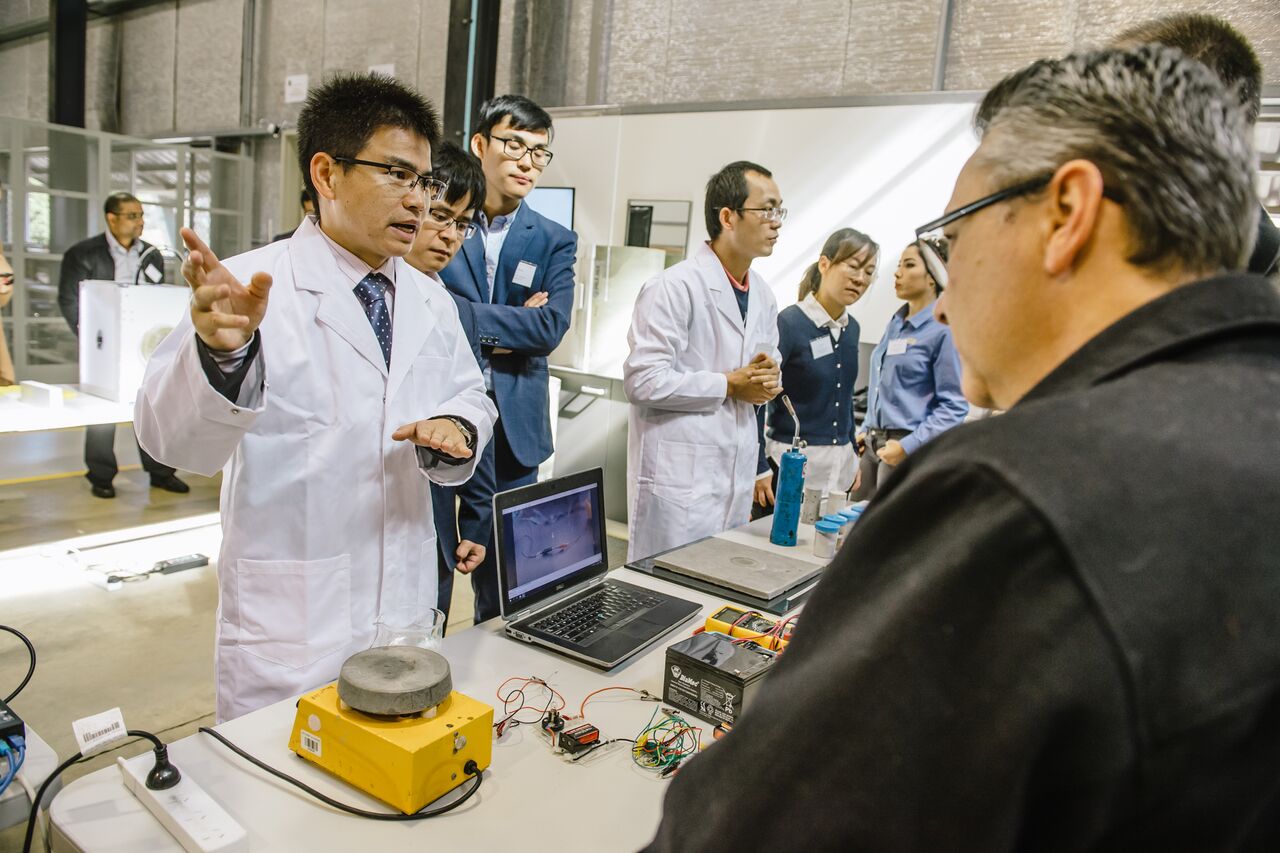Functional Materials
CFM focuses on developing
Core Projects
- ARC Discovery 2019 – Composites for Thermal Expansion Matched Cathodes of Solid Oxide Fuel Cells 2019-2021
- ARC Discovery 2019 – Cost-effective, low-toxic and high-efficiency thermoelectric nanomaterials 2019 – 2021
- ARC Discovery 2019 – Core-Shell Nanofibrous Bio-Based Flame Retardants Combining Mechanical Reinforcement for Polymers 2019-2021
- ARC DECRA 2019 – Bioinspired High-Performance Flame Retardant Polymer Foam by Nanocoating 2019-2021
- ARC-Training Centre in Fire Retardant Materials and Safety Technologies 2018-2020
- ARC-Electrochemical conversion of carbon dioxide to formic acid 2018-2020
- ARC-Selective wellbore coatings to control fines damage in coal seam gas wells 2018-2020
- ARC Future Fellowship- Development of Flame Retardant Thermal Insulation Materials for Buildings 2020-2023
- ARC DP- Core-Shell Nanofibrous Bio-Based Flame Retardants with Reinforcement Function 2019-2021



Core Research Areas
Thermoelectrics
This project aims to develop novel band-engineered (Bi, Sb)2Te3 nanomaterials for high- efficiency energy conversion using novel microwave-assisted wet chemistry approach coupled with nanostructure and band engineering strategies.
Flame retardant building material
This Fellowship proposal aims to develop next-generation fire-retardant rigid polymer foams (RPF)-based thermal insulation materials for buildings. Through investigating fire-retardancy, mechanical and ageing properties, we will fundamentally understand the structure/composition – performance relationships of as-designed nanostructured fire-retardant polymer coatings and will achieve robust, durable and fire-retardant coatings. This project will thenapply the fire-retardant coatings to the RPF to create the target fire-retardant thermal insulation materials. New knowledge and patentable technologies to be generated will bring significant benefits to Australia by reducing energy costs and economic losses associated with building fires.
Shape Memory
Glass fibre reinforced shape memory polymer is being developed for smart engineering structural applications. It addresses the visibility of using light activation, shape memory performance, and shape stability of the glass fibre reinforced composites.
Bio-Based Flame Retardants
This project aims to develop high-performance bio-based flame retardants (FRs) by designing a novel core-shell nanofibrous FR system combining exceptional flame retardancy and mechanical reinforcement. Effects of the hierarchical FRs on the processing, flame retarancy and mechanical properties of the polymer hosts will be evaluated and tailored by optimizing synthesis parameters. The establishment of the processing-structure-performance correlations along with theoretical modelling and the understanding of flame retardancy and reinforcement mechanisms will enable the development of high-performance FRs and their advanced polymer products. The outcomes of this work will greatly contribute to safeguarding our life, property and environment.
Nanocomposites
Natural rubber (NR) nanocomposites achieves higher tensile strength and tear strength by almost 20% than pure NR. The nano composite material also has higher electrical conductivity than pure NR.
Sensing
Composite structural integrity is being assessed by coupling FBG sensors, infrared thermography and the advanced FE numerical analyses.
